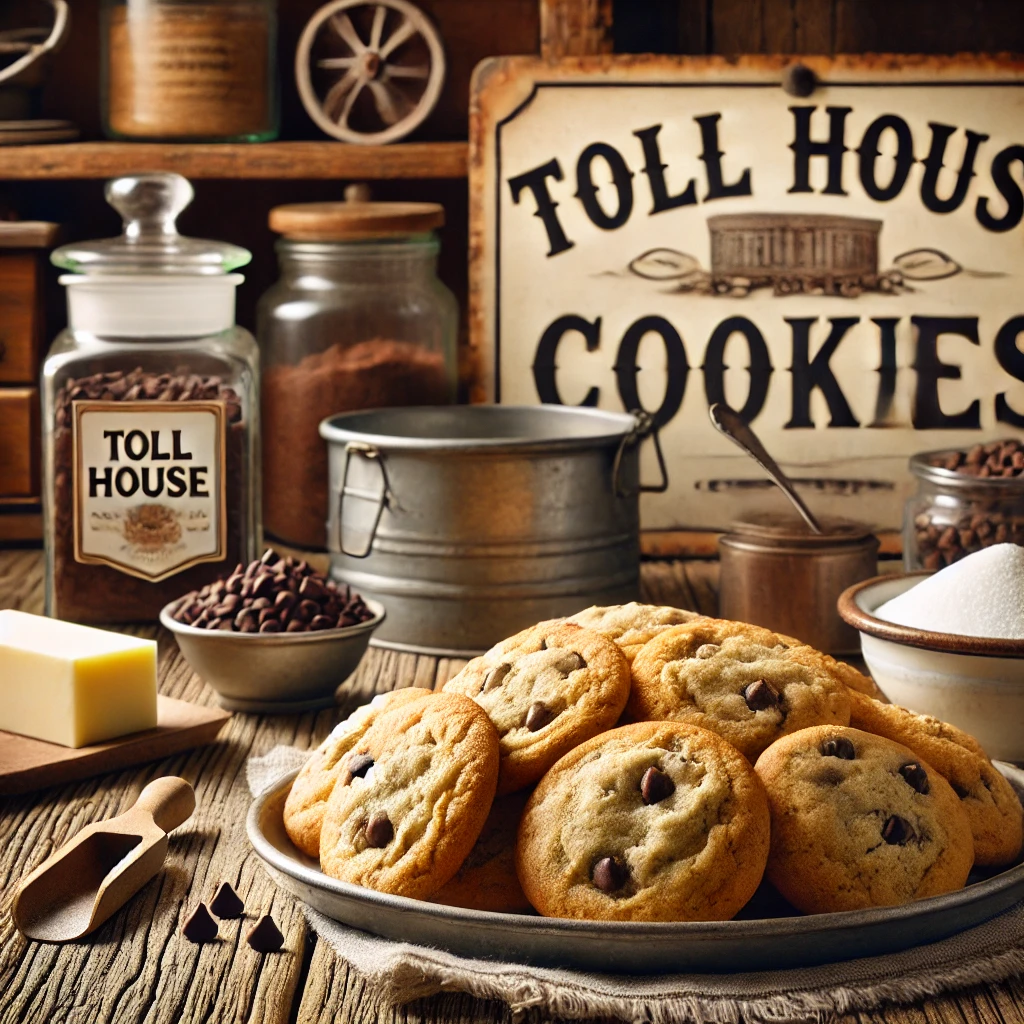Chocolate chip cookies are a classic dessert enjoyed by millions. However, not many people know the fascinating history behind these beloved treats. Toll House cookies originated in a small inn in Massachusetts, and their creation has since become a hallmark of American baking. This article explores the origins of Toll House cookies, their inventor, and how they became the iconic dessert we know today.

The Story of the Toll House Inn
The Toll House Inn was a popular establishment in Whitman, Massachusetts, founded by Ruth Wakefield and her husband in the 1930s. It served as both a restaurant and a stopover for travelers. Ruth Wakefield became famous for her homemade meals, but her real claim to fame was the cookie recipe she created in 1938: the Toll House chocolate chip cookie.
As the inn’s popularity grew, so did the demand for the cookie recipe. Travelers frequently stopped at the inn, enjoyed the cookies, and then shared the recipe with others. This helped the Toll House cookie gain regional fame. If you’re interested in learning more about how famous recipes like this one impact American baking, check out this comprehensive recipe collection.
The Invention of the Chocolate Chip Cookie
Contrary to popular belief, Ruth Wakefield did not invent the chocolate chip cookie by accident. She carefully developed the recipe using chopped pieces of Nestlé semi-sweet chocolate. Rather than melting throughout the dough, the chocolate chunks kept their shape, giving the cookies a distinctive texture and flavor.
Soon after, this new cookie recipe spread across Massachusetts, and before long, the whole nation had fallen in love with Toll House cookies. To discover other cookie recipes with interesting backstories, check out Earl Grey cookies, another innovative treat.
The Partnership with Nestlé
The growing popularity of Toll House cookies attracted the attention of Nestlé. Andrew Nestlé reached out to Ruth Wakefield, proposing a partnership. In exchange for allowing Nestlé to print her recipe on their chocolate bar packaging, Wakefield received a lifetime supply of Nestlé chocolate. This partnership benefited both parties and helped promote Nestlé chocolate chips.
With the recipe printed on Nestlé chocolate bars, the popularity of Toll House cookies continued to rise. To this day, Nestlé Toll House cookies remain a staple in American homes. If you’re curious about how different cookie dough varieties create unique flavors, check out how the classic Toll House cookie recipe has evolved over time in recipes like Pumpkin Banana Loaf.
The Cookie That Changed America
By the mid-20th century, Toll House cookies had cemented their place in American culture. Featured in cookbooks, magazines, and advertisements, the cookies became an integral part of American baking. Whether they were baked for holidays, bake sales, or snacks, Toll House cookies quickly became a dessert icon.
Even today, families continue to bake Toll House cookies for special occasions and as everyday treats. The simplicity of the recipe and the delicious taste have kept these cookies relevant for decades, making them an essential part of the American dessert landscape.
Myths and Misconceptions About the Origins of Toll House Cookies
Several myths surround the invention of Toll House cookies. One common misconception is that Ruth Wakefield accidentally invented them while experimenting with chopped Nestlé bars as a substitute for baking chocolate. However, Wakefield actually designed the recipe deliberately, expecting the chocolate to hold its shape rather than melt.
Another widespread myth is that Ruth Wakefield sold her recipe to Nestlé. In reality, she shared the recipe in exchange for a lifetime supply of Nestlé chocolate, not monetary compensation. These myths have been widely shared, but the true story highlights Ruth Wakefield’s ingenuity and creativity in developing a timeless cookie.
Toll House Cookies and Modern Variations
Since its creation, the original Toll House cookie recipe has inspired a wide range of variations. Bakers have experimented with adding ingredients such as peanut butter, oatmeal, and even different types of chocolate chips. One modern twist on classic cookie recipes is the Pumpkin Banana Loaf, which blends seasonal flavors for a new take on a beloved treat.
Although new variations continue to emerge, the original Toll House cookie recipe remains a favorite in homes worldwide. Its adaptability allows bakers to create unique flavors while staying true to the classic taste.
Frequently Asked Questions (FAQ)
Who invented Toll House cookies?
Toll House cookies were invented by Ruth Wakefield at the Toll House Inn in Whitman, Massachusetts, in 1938.
Why are they called Toll House cookies?
The cookies are named after the Toll House Inn, where Ruth Wakefield developed the original recipe.
Did Ruth Wakefield sell the recipe to Nestlé?
No, she did not sell the recipe. Instead, Ruth Wakefield shared it with Nestlé in exchange for a lifetime supply of chocolate.
Where was the original Toll House located?
The Toll House Inn was located in Whitman, Massachusetts.
Conclusion
The story of Toll House cookies is rich with culinary history and cultural significance. From the Toll House Inn kitchen to households across the globe, these cookies have left an indelible mark on the world of baking. Whether you follow the original recipe or explore modern variations, Toll House cookies continue to delight generations of dessert lovers.
For more on other iconic recipes and their stories, check out this collection of recipes for more inspiration.
